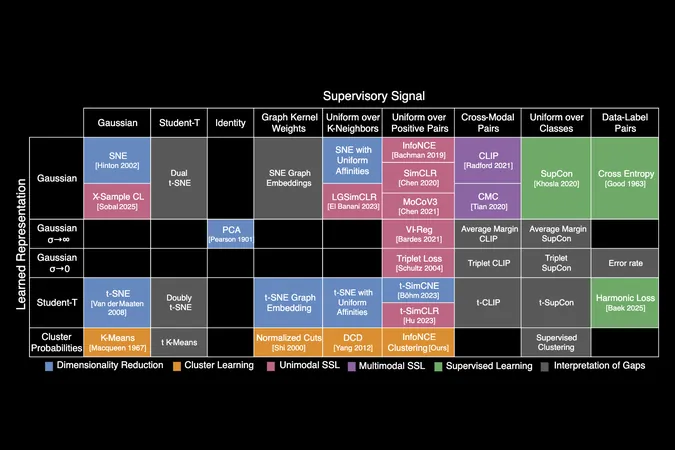
Staggering Stats: 2,679 Preventable Pregnancy Deaths in the U.S. from 2018–2022
2025-04-14
Author: Nur
A Shocking Revelation in Maternal Health
A groundbreaking study by leading researchers reveals a haunting statistic: 2,679 pregnancy-related deaths in the United States between 2018 and 2022 could have been avoided. Conducted by a collaboration among prominent institutions such as Harvard Medical School and Boston Children's Hospital, the findings spotlight a dire public health crisis in the nation's maternity care.
America’s Alarming Maternal Mortality Rates
The U.S. is now infamous for having the highest maternal mortality rates among high-income countries—a staggering reality that raises urgent concerns. According to state-based Maternal Mortality Review Committees, an overwhelming 80% of these deaths are deemed preventable, emphasizing the need for immediate systemic changes.
Disparities in Mortality Rates
The study underscores that women in rural areas face pregnancy-related mortality rates 1.7 times higher than those in large cities. Disparities are even more pronounced among non-Hispanic Black and American Indian or Alaska Native women, who experience rates two to three times higher than their white counterparts.
Challenges in Tracking and Reporting Deaths
Current tracking systems, such as the National Vital Statistics System, often provide inconsistent numbers. Before 2018, many states had not adopted updated reporting methods, leading to unreliable data. Furthermore, many late maternal deaths—those occurring from 42 days to one year post-pregnancy—remain unaccounted for, complicating our understanding of this issue.
Diving Into the Numbers
In their comprehensive analysis published in JAMA Network Open, researchers examined a staggering 18,475,989 live births alongside 6,283 pregnancy-related deaths across a diverse age group of women aged 15 to 54. Their meticulous calculations aimed to clarify the rates of pregnancy-related mortality across various demographics.
State-by-State Breakdown Reveals Stark Differences
The data revealed a shocking variation in mortality rates across states. Alabama topped the list with a shocking 59.7 deaths per 100,000 live births, while California boasted the lowest rate at 18.5. If the U.S. national rate matched that of California, a staggering 2,679 lives could have been saved.
Who Is Most at Risk?
Women aged 25 to 39 saw a 36.8% spike in pregnancy-related deaths, with American Indian and Alaska Native women facing the highest risk at rates of 106.3 per 100,000 live births. In stark contrast, non-Hispanic Asian women experienced the lowest rate at just 21.8. The disparities are crystal clear and concerning.
Identifying Leading Causes of Death
The primary contributor to late maternal deaths was cardiovascular disorders, with additional factors including cancer and drug-induced fatalities. Disturbingly, mental health issues also accounted for a notable percentage of these tragic losses.
A Call for Change
As concluded by the researchers, the issue of pregnancy-related deaths remains a critical public health emergency in the U.S. The majority of these deaths are preventable, often occurring beyond the immediate postpartum period. Addressing the causes and timing of these fatalities is vital for developing effective prevention strategies and ultimately decreasing racial and geographical disparities in maternal health.


 Brasil (PT)
Brasil (PT)
 Canada (EN)
Canada (EN)
 Chile (ES)
Chile (ES)
 Česko (CS)
Česko (CS)
 대한민국 (KO)
대한민국 (KO)
 España (ES)
España (ES)
 France (FR)
France (FR)
 Hong Kong (EN)
Hong Kong (EN)
 Italia (IT)
Italia (IT)
 日本 (JA)
日本 (JA)
 Magyarország (HU)
Magyarország (HU)
 Norge (NO)
Norge (NO)
 Polska (PL)
Polska (PL)
 Schweiz (DE)
Schweiz (DE)
 Singapore (EN)
Singapore (EN)
 Sverige (SV)
Sverige (SV)
 Suomi (FI)
Suomi (FI)
 Türkiye (TR)
Türkiye (TR)
 الإمارات العربية المتحدة (AR)
الإمارات العربية المتحدة (AR)